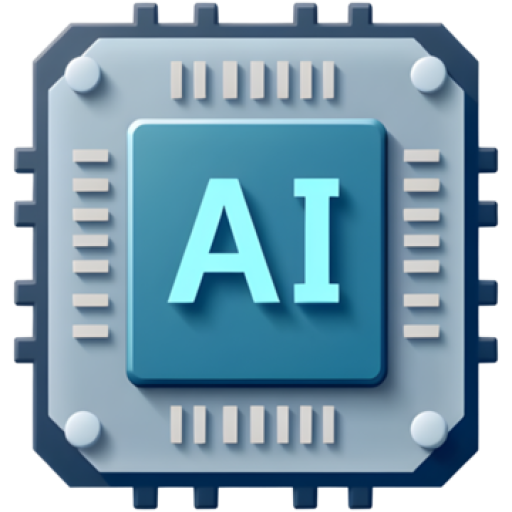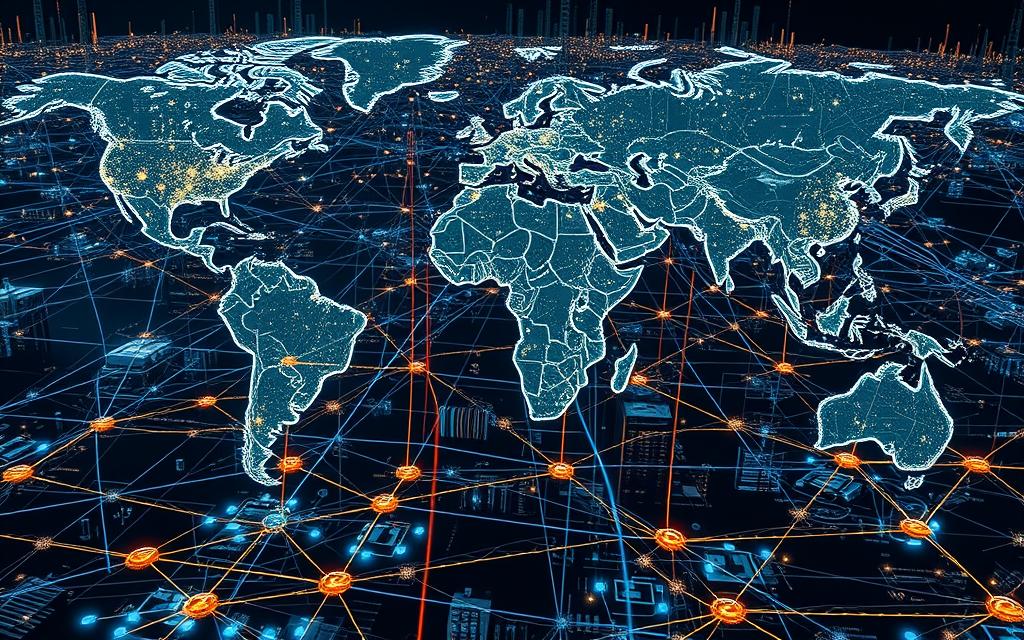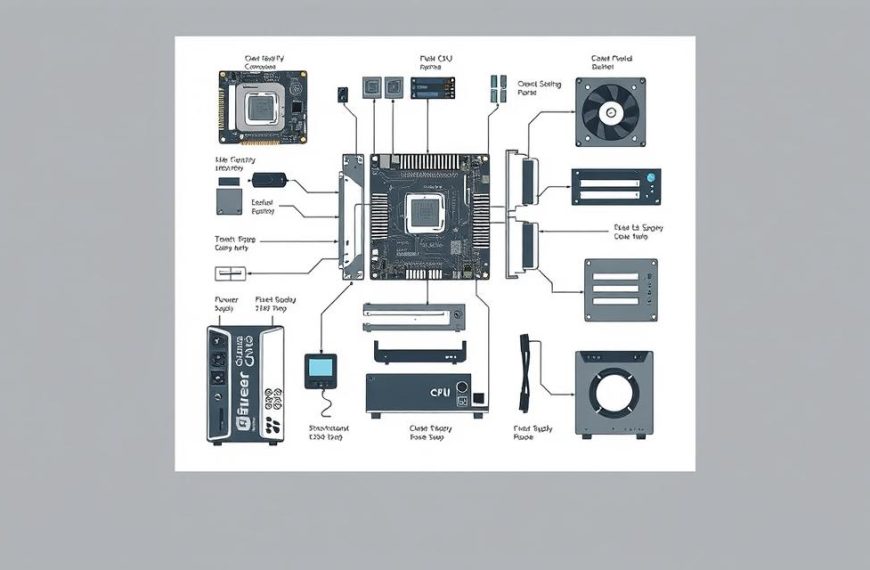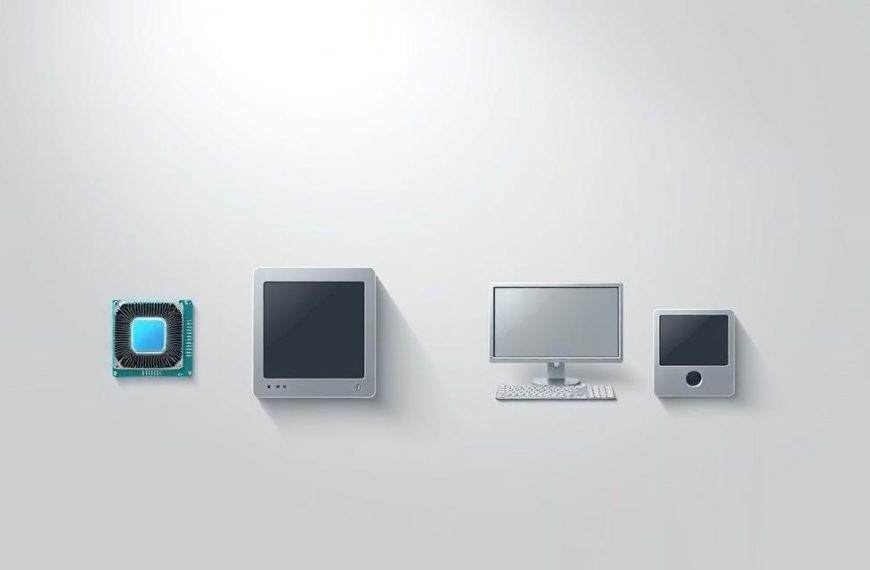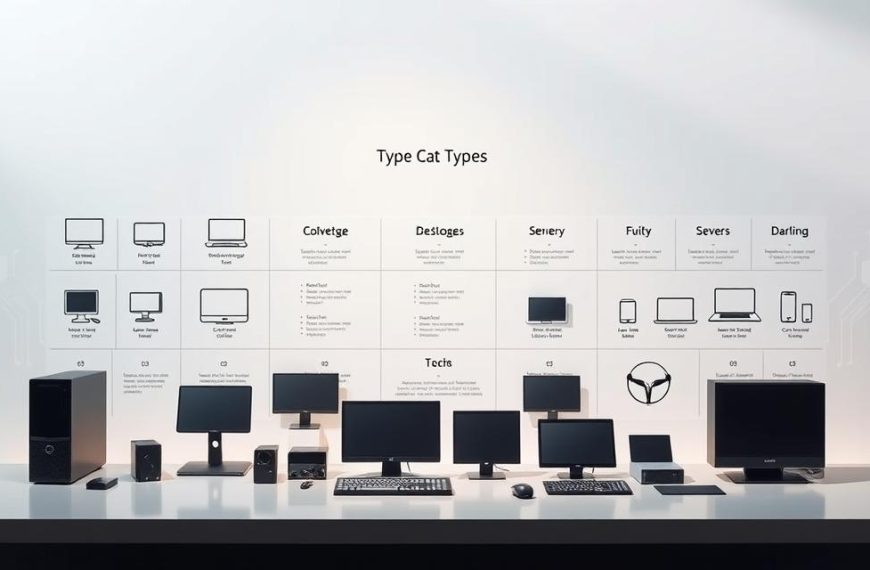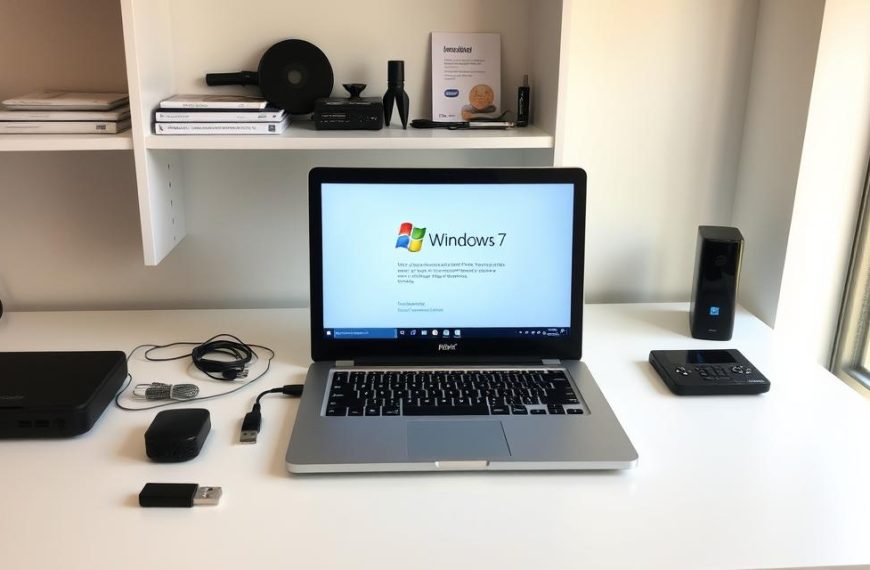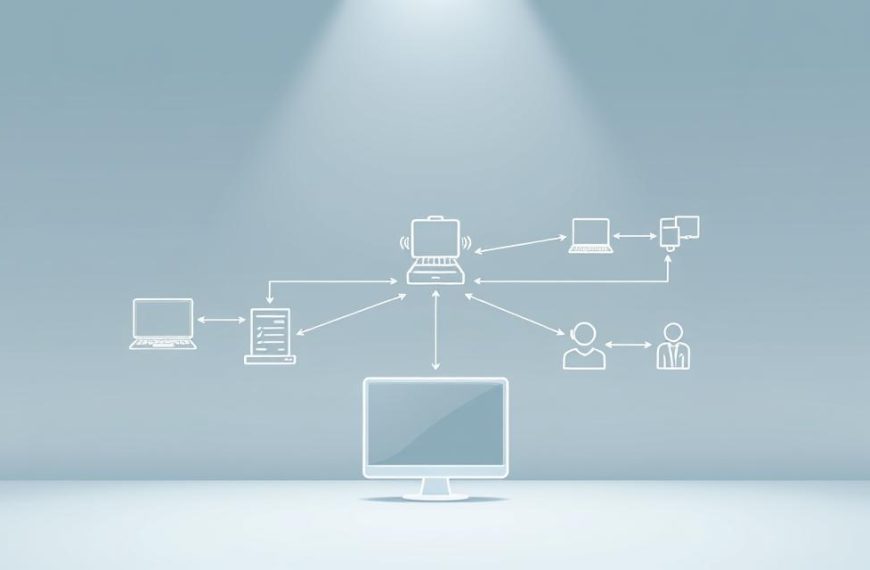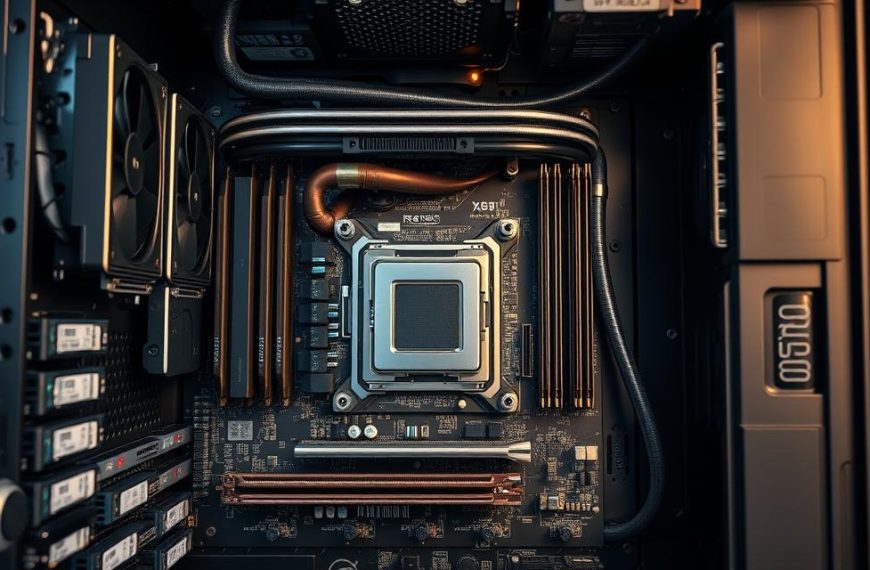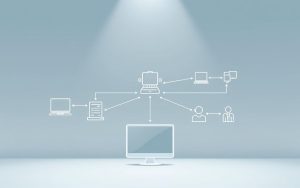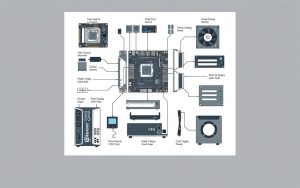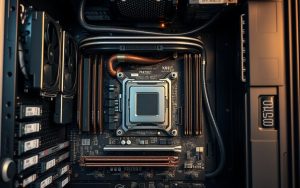The foundation of modern digital communication is built on a vast network of linked systems. They exchange data using standardised rules. This network, based on the TCP/IP protocol stack, lets devices worldwide share information.
It uses packet-based transmission methods. Unlike local networks, it has a decentralised design. This allows billions of devices to work together without needing a central controller.
There’s a big difference between this network and services like the World Wide Web. Websites use HTTP protocols, but they’re just one part of the internet. The packet switching methodology makes sure data gets to its destination, even if parts of the network are down.
Three key parts make up this system:
- Standardised communication protocols for data exchange
- Interconnected routers that guide information packets
- Physical infrastructure like fibre-optic cables and servers
This framework supports many services, not just web browsing. It includes email systems and cloud storage. Its strength comes from having many paths for data and features that fix errors in the TCP/IP protocol stack. This keeps the system stable even when parts fail.
Understanding the Global System of Interconnected Computer Networks
The internet is a complex system of physical and digital parts working together. This section looks at its structure and how it works. It shows how devices talk to each other across the world in just milliseconds.
Defining the Internet’s Core Architecture
Key Components Enabling Worldwide Connectivity
The internet has four main parts:
- Routers: Send data between networks
- Servers: Keep and share digital content
- Fibre-optic cables: Carry data as light pulses
- Network protocols: Set rules for communication
https://www.youtube.com/watch?v=n4i_8rMJdag
| Internet | World Wide Web |
|---|---|
| Physical network infrastructure | Information-sharing system |
| Uses TCP/IP protocols | Relies on HTTP protocol |
| Enables email & file transfers | Hosts websites & web apps |
Fundamental Principles of Network Interconnection
Packet Switching Methodology
This method was created in the 1960s by ARPA:
- Divides data into packets
- Sends each packet on its own
- Reassembles data at the end
This way, it stops network jams and makes data transmission smooth across many paths.
TCP/IP Protocol Stack Explained
The four-layer model for internet communication:
| Layer | Function | Example |
|---|---|---|
| Application | User-facing services | HTTP, FTP |
| Transport | End-to-end connections | TCP, UDP |
| Internet | Addressing & routing | IPv6 |
| Network Access | Physical transmission | Ethernet |
IPv4 ran out of addresses in 2011. Now, IPv6 supports 340 undecillion addresses. This is way more than IPv4’s 4.3 billion.
Historical Development of Computer Networking Systems
The journey to global digital connectivity started with military-funded projects. These projects changed civilian communication. They moved from isolated networks to universal protocols, shaping today’s internet.
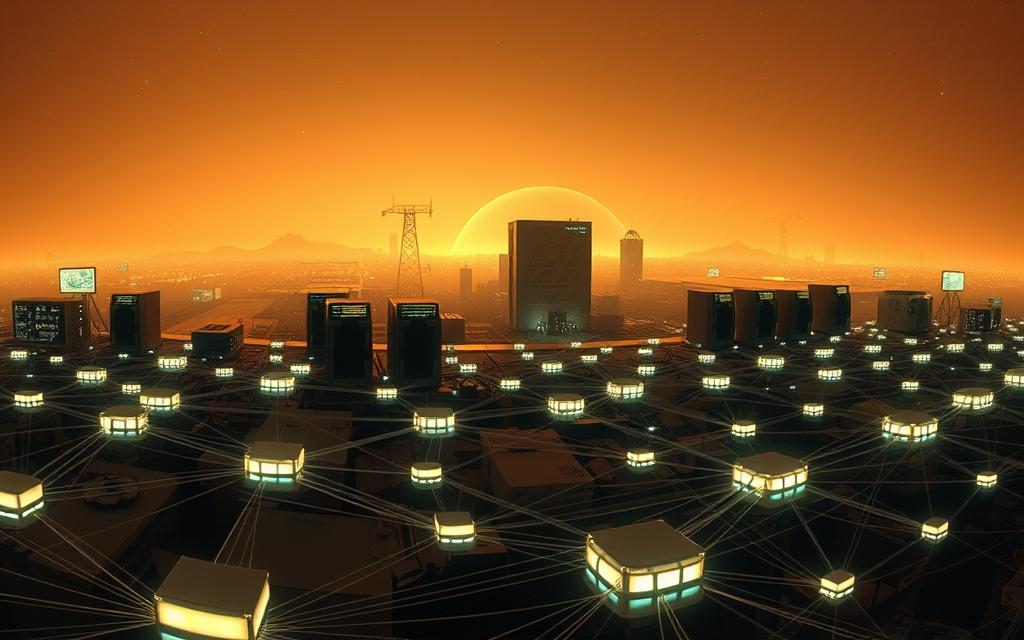
Early Network Prototypes: 1960s-1980s
ARPANET’s Role in Initial Network Development
The Advanced Research Projects Agency Network (ARPANET) began in 1969 with four university nodes. Its first message between UCLA and Stanford showed packet-switching technology’s power. By 1971, 15 nodes connected government labs and schools, making the first wide-area network.
Creation of Email and FTP Protocols
Ray Tomlinson created electronic mail in 1971, using the @ symbol. The File Transfer Protocol (FTP) came in 1973, for sharing data across networks. These steps turned ARPANET into a useful communication tool.
Standardisation and Global Expansion
Adoption of TCP/IP in 1983
The “protocol wars” ended when ARPANET adopted TCP/IP on 1 January 1983. This move:
- Created a common networking language
- Connected different networks
- Set the stage for the internet’s growth
NSFNET and Commercial Network Integration
The National Science Foundation Network (NSFNET) started in 1985 with a 56kbps backbone. It boosted academic work. By 1991, its 44.7Mbps backbone supported:
- Connecting regional networks
- Commercial internet services
- Early web browser development
| Network | Year Established | Key Contribution | Connection Speed |
|---|---|---|---|
| ARPANET | 1969 | Packet-switching foundation | 50kbps |
| NSFNET | 1985 | Academic-commercial bridge | 56kbps-44.7Mbps |
| CSNET | 1981 | Email for non-ARPANET institutions | 56kbps |
By 1992, 50,000 networks were connected, up from 213 in 1981. This change marked the internet’s shift from government control to a public utility.
Modern Internet Infrastructure Components
The internet works smoothly thanks to both physical and digital parts. This part looks at the key parts of today’s connected world. We’ll see from undersea cables to cloud-based systems.
Physical Network Elements
Every online action is backed by a network of physical parts. These parts are the heart of global connection. They let data travel across continents fast.
Submarine cables and satellite systems
More than 95% of international data goes through fibre optic networks under the sea. These cables, some 12,000 miles long, send info fast. Satellites help reach distant areas and provide backup when cables need fixing.
IXPs are key spots where networks swap data directly. Places like London’s LINX and Frankfurt’s DE-CIX handle huge amounts of data. They use network topology to make data flow better.
- Reduces latency by up to 75%
- Cuts bandwidth costs for providers
- Improves fault tolerance through distributed routing
Logical Network Organisation
Physical parts are the internet’s skeleton, but digital systems run it. These systems make sure data gets to where it needs to go well.
Domain Name System (DNS) hierarchy
The DNS turns easy-to-read addresses into IP numbers machines can use. ICANN manages this big directory with 12 root servers. It keeps the internet stable across:
- Top-level domains (.com, .org)
- Country-code extensions (.uk, .de)
- New generic domains (.app, .cloud)
Content delivery networks (CDNs)
CDNs like Cloudflare and Akamai use cloud infrastructure. They store content on over 300 global servers. This setup:
- Speeds up website loading by 50-70%
- Lessens server load during busy times
- Blocks 85% of DDoS attacks before they hit the server
Key Services Enabled by Global Networking
The internet’s technical backbone powers services that have changed how we work, learn, and connect. It lets us access information and collaborate across continents. These systems show how protocol development enables practical applications.
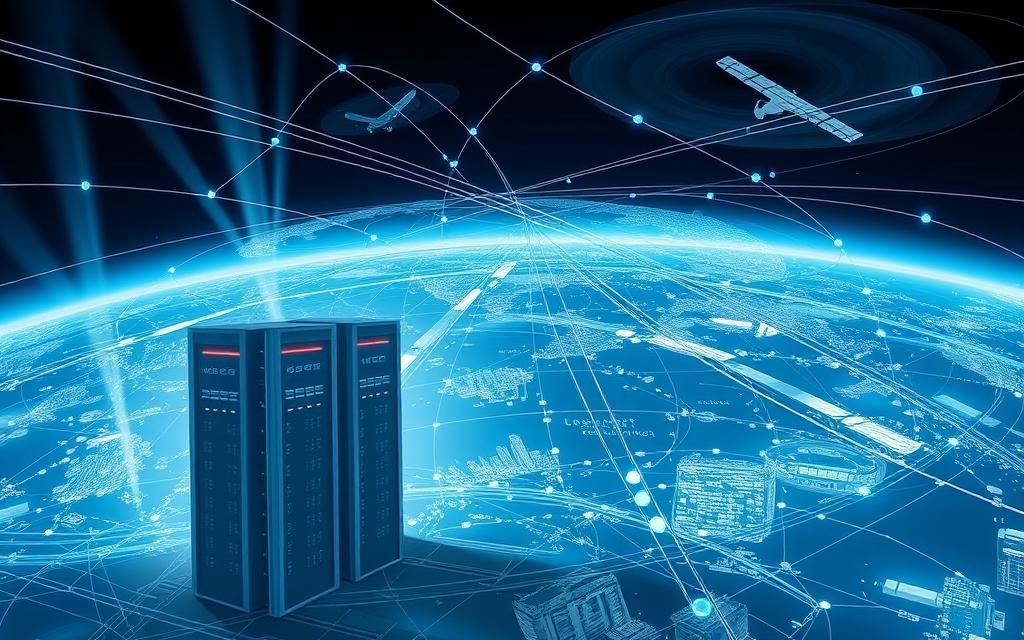
World Wide Web Ecosystem
Tim Berners-Lee invented the web in 1989. He combined HTTP protocols with browser software to organise online content. Today, browsers like Chrome and Firefox support advanced features.
HTTP/HTTPS protocols and web browsers
- Encrypted data transfer through SSL/TLS certificates
- Progressive web app capabilities
- Cross-platform synchronisation
Cloud computing platforms
Services like AWS and Microsoft Azure show how peer-to-peer networks evolved. They offer scalable data storage, real-time collaboration tools, and AI-powered analytics.
- Scalable data storage
- Real-time collaboration tools
- AI-powered analytics
Real-Time Communication Systems
Global networking removed geographical barriers through instant voice and video exchanges. This change came from two key innovations.
Voice over IP (VoIP) technologies
Skype launched in 2003, showing how packet-switching could replace traditional phone lines. Today, systems like Zoom handle over 300 million daily participants. They use echo cancellation algorithms, bandwidth optimisation, and end-to-end encryption.
- Echo cancellation algorithms
- Bandwidth optimisation
- End-to-end encryption
Video conferencing infrastructure
The pandemic made platforms combining streaming media and collaborative features more popular. Key developments include background noise suppression, virtual breakout rooms, and HD screen sharing.
- Background noise suppression
- Virtual breakout rooms
- HD screen sharing
These services show how technical protocols become tools shaping modern society. From web browsing to remote teamwork, global networking continues to redefine human capabilities.
Societal Impact of Universal Connectivity
Now, 4.5 billion people use the internet worldwide. This has changed how we live and work. It has led to big changes in how we do business and how we see the world.
Economic Transformation
The internet helps with £5.3 trillion in online shopping every year. Experts call this the “Third Industrial Revolution”. Online shopping grows faster than traditional stores.
E-commerce revolution
Online shops have opened doors for 83% of small businesses without a physical store. Before the internet, they didn’t have a chance.
| Metric | 2000 | 2023 |
|---|---|---|
| Global e-commerce sales | £114bn | £4.9tn |
| Cross-border transactions | 17% | 63% |
| SME participation rate | 29% | 81% |
Digital workforce evolution
Telecommuting trends show 58% of office workers now work from home. This change brings new challenges:
- 43% less office space needed in cities
- 15% more pay for cloud experts
- 37% of rural workers lack the right tools
Cultural and Educational Implications
The internet lets us share cultures instantly. K-pop concerts in Seoul now reach 12 million fans worldwide.
Global information access patterns
Wikipedia has 317 language versions. But, 62% of academic papers are behind paywalls.
Online learning platforms
MOOC platforms like Coursera teach 1.2 million people new skills every month. But, only 33% of African students can access these resources.
“Connectivity’s true measure lies not in access numbers, but in equitable participation opportunities.”
The Path Forward for Global Digital Connectivity
The internet is changing how we live and work, thanks to new trends. By 2025, 5G will cover 60% of cities, making everything faster. This will help more devices connect, making cities smarter and more efficient.
Keeping data safe is key as technology advances. New ways to protect data are being developed. Companies like Cloudflare and Cisco are leading the way, making sure we stay safe online.
The internet helps us work together like never before. But we need to make sure it’s fair and safe. As we move forward, we must find a balance between progress and protecting our privacy.
